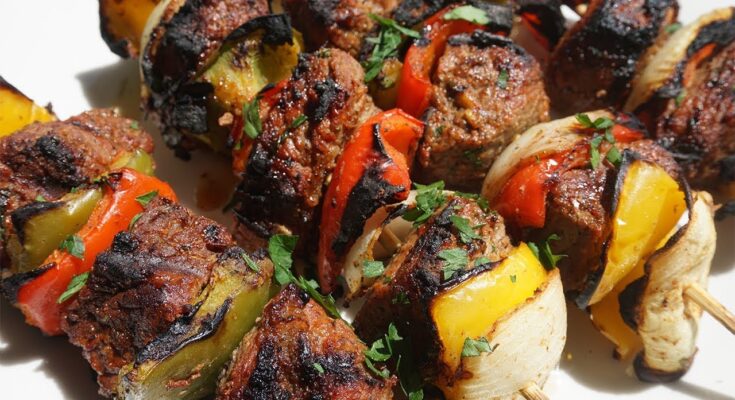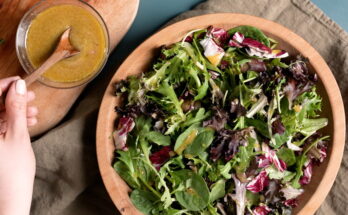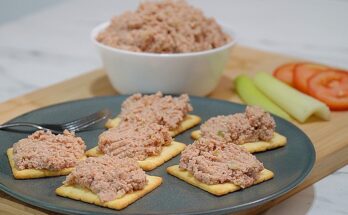Beef Kebab Recipe: Beef kebabs are more than just grilled meat on skewers—they are a culinary tradition enjoyed across cultures. What makes them special is the combination of tender beef, aromatic spices, and smoky cooking methods that bring out incredible flavors. Unlike other beef dishes, kebabs are versatile; you can cook them on a grill, in an oven, or even on a stovetop pan. Their charm lies in their simplicity, yet they feel like a gourmet dish when served at gatherings, BBQs, or family dinners.
Another reason beef kebabs stand out is their ability to balance richness with freshness. While the beef provides a juicy, savory taste, the spices add warmth, and the skewered vegetables (if you choose to add them) bring a refreshing crunch. This makes them a complete meal in one bite.
A Quick History of Kebabs
The word kebab is believed to have originated from the Middle East and South Asia, where skewered meat has been a staple for centuries. Historians suggest that nomadic tribes first developed this style of cooking as it was easy to roast meat over open fires. Over time, kebabs spread to various parts of the world—each culture adding its unique twist.
In Turkey, kebabs are often marinated with yogurt and spices, while in Iran, saffron is a popular flavoring. In India and Pakistan, kebabs take on a spicier profile with ingredients like chili, cumin, and garam masala. Today, beef kebabs are enjoyed globally, making them one of the most popular grilled dishes in the world.
Ingredients You’ll Need
Main Ingredients for Beef Kebabs
To prepare delicious beef kebabs, you need fresh, quality ingredients. Here’s a basic list:
- Beef (sirloin, ribeye, or tenderloin – 1.5 to 2 lbs)
- Onions (2 medium, finely grated or chopped)
- Garlic (3–4 cloves, minced)
- Fresh parsley or cilantro (a handful, chopped)
- Bell peppers (optional, cut into chunks)
- Tomatoes or cherry tomatoes (optional, for skewering)
The type of beef you choose plays the most important role in the final taste. Tender cuts ensure the kebabs remain juicy and flavorful even after grilling.
Spices and Seasonings for Authentic Flavor
The real magic of beef kebabs lies in their seasoning. Here are the must-have spices:
- Cumin powder – adds a warm, earthy flavor
- Coriander powder – slightly citrusy, balancing the richness
- Paprika or chili powder – for a smoky or spicy kick
- Black pepper – sharp and robust
- Salt – enhances all flavors
- Olive oil or vegetable oil – keeps the meat moist
- Lemon juice or vinegar – tenderizes the beef
These spices can be adjusted according to your taste preferences. Some like it fiery hot, while others prefer mild, aromatic flavors.
Optional Ingredients for Variations
Want to experiment? Here are a few optional ingredients you can add:
- Yogurt – for creamier marinades
- Soy sauce – for an Asian-style flavor
- Garam masala – for an Indian twist
- Fresh mint leaves – for a refreshing taste
These additions can completely change the flavor profile, giving you endless variations to enjoy.
Tools and Equipment Required
Essential Kitchen Tools
To make perfect kebabs, having the right tools is just as important as the ingredients. You’ll need:
- A sharp chef’s knife for cutting the beef evenly
- A cutting board dedicated to meat prep
- A mixing bowl for marinating
- Skewers (wooden or metal)
- A grill, oven, or pan depending on your cooking method
- Tongs to turn the kebabs while cooking
Skewers: Wooden vs. Metal
Skewers are at the heart of kebab-making. Wooden skewers are affordable and widely available, but they must be soaked in water for at least 30 minutes before grilling to prevent burning. Metal skewers, on the other hand, are reusable and conduct heat better, cooking the meat more evenly. If you’re a frequent kebab maker, investing in good-quality metal skewers is worth it.
Grilling vs. Oven vs. Pan
While traditional kebabs are grilled over charcoal, modern kitchens offer flexibility.
- Grill – Gives the best smoky flavor and grill marks.
- Oven – A convenient method, especially for larger batches.
- Pan/Skillet – Perfect for when you don’t have access to a grill or oven.
Each method has its charm, and choosing one depends on your preference and available equipment.
Preparing the Beef
Choosing the Right Cut of Beef
Not all cuts of beef are created equal when it comes to kebabs. You want cuts that are tender yet have enough fat to keep them juicy. The best options include:
- Sirloin – Affordable, tender, and flavorful.
- Ribeye – Rich in marbling, making it extra juicy.
- Tenderloin – Soft and buttery, though more expensive.
Avoid cuts like chuck or brisket, as they are tougher and better suited for slow cooking rather than grilling.
Trimming and Cutting the Meat
Once you’ve chosen your beef, trim away excess fat and sinew to ensure even cooking. Cut the beef into uniform cubes, about 1.5 inches each. Uniformity is crucial because uneven pieces can result in some chunks being undercooked while others get dry and overcooked.
Marinating for Maximum Flavor
Marination is the secret to mouthwatering kebabs. A good marinade does two things: it tenderizes the meat and infuses it with flavor.
A simple marinade includes:
- Olive oil
- Lemon juice
- Minced garlic
- Ground cumin
- Paprika
- Salt & pepper
Mix the ingredients well, coat the beef cubes thoroughly, and cover the bowl with plastic wrap. Let the beef marinate in the fridge for at least 2–4 hours, though overnight gives the best results.
Step-by-Step Cooking Process
Skewering the Meat
After marination, it’s time to assemble the kebabs. Thread the beef cubes onto skewers, alternating with vegetables like onions, bell peppers, or cherry tomatoes if you like. Don’t overcrowd the skewer—leave a little space between pieces to ensure even cooking.
Cooking on the Grill
Preheat your grill to medium-high heat. Place the skewers on the grill and cook for about 8–10 minutes, turning occasionally to get an even char. For medium-rare, aim for an internal temperature of 135°F (57°C). Adjust based on your preferred doneness.
Alternative Cooking Methods
- Oven method: Preheat to 400°F (200°C) and bake the kebabs for 20–25 minutes, turning halfway through.
- Pan-frying: Heat oil in a skillet and cook skewers for 10–12 minutes, turning occasionally until nicely browned.
Each method delivers great results, so choose the one that fits your cooking setup best.
Serving Suggestions
Side Dishes That Pair Well
Beef kebabs are flavorful on their own, but pairing them with the right side dishes can elevate your meal to a whole new level. A classic choice is pita bread or naan, which soaks up the juicy flavors of the meat and marinade. If you want something lighter, serve kebabs with a fresh Mediterranean salad loaded with cucumbers, tomatoes, onions, and olives. For a heartier option, rice pilaf or couscous works perfectly, absorbing the kebab’s savory juices.
Another popular choice is roasted or grilled vegetables—zucchini, eggplant, and bell peppers blend well with the smoky flavor of kebabs. For BBQ-style gatherings, pair them with corn on the cob, baked potatoes, or coleslaw. The idea is to balance the rich taste of beef with refreshing or starchy accompaniments.
Sauces and Dips for Extra Flavor
No kebab experience is complete without sauces. Some of the most popular options include:
- Tzatziki Sauce – A creamy Greek yogurt sauce with cucumber and garlic.
- Tahini Sauce – Nutty and smooth, pairs beautifully with Middle Eastern kebabs.
- Chimichurri – A zesty Argentinian sauce made with parsley, garlic, and olive oil.
- Mint Chutney – Refreshing and slightly spicy, a favorite in South Asian cuisine.
- Garlic Aioli – Rich and garlicky, perfect for dipping.
These sauces not only complement the beef but also allow each person to customize their flavor experience.
Presentation Tips
The way you serve kebabs can make a huge difference. Arrange the skewers on a platter with grilled vegetables around the edges. Garnish with fresh herbs like parsley or cilantro for a vibrant look. Adding a few lemon wedges on the side not only adds color but also allows guests to squeeze some freshness over the kebabs.
For parties, serve kebabs directly on skewers for a rustic feel, or remove the meat from the skewers and place it over rice or salad for a more elegant presentation. A simple touch like sprinkling sesame seeds or drizzling sauce before serving makes the dish visually appealing and appetizing.
Tips for Perfect Beef Kebabs
Common Mistakes to Avoid
Even though kebabs look simple, many home cooks make a few mistakes that can ruin the final dish. The biggest one is using the wrong cut of beef. Tough cuts don’t cook well on high heat, leading to chewy kebabs. Another mistake is overcrowding the skewers—if pieces are packed too tightly, they won’t cook evenly.
Some people also skip marination, which results in bland, dry meat. And lastly, cooking kebabs on high heat without monitoring them can easily burn the outside while leaving the inside undercooked.
Cooking Time and Temperature Tips
Beef kebabs cook quickly, so timing is everything. Ideally, you should cook them over medium-high heat. Grill for about 8–10 minutes, flipping occasionally. For an accurate result, use a meat thermometer:
- Rare: 125°F (52°C)
- Medium Rare: 135°F (57°C)
- Medium: 145°F (63°C)
- Well Done: 160°F (71°C)
Keep in mind that kebabs continue to cook slightly after being removed from heat, so it’s best to take them off a little earlier than your target doneness.
How to Keep Kebabs Juicy
Dry kebabs are disappointing, but avoiding them is simple. The secret lies in marination and fat content. Choose beef cuts with some marbling, as fat keeps the meat moist during cooking. Adding olive oil or yogurt in the marinade also helps lock in juices.
Don’t forget to rest the kebabs for a few minutes after cooking. This allows the juices to redistribute, resulting in tender, juicy bites every time.
Variations of Beef Kebabs
Middle Eastern Style
Middle Eastern kebabs are famous for their aromatic spices. These kebabs often feature ingredients like cumin, coriander, cinnamon, and cardamom. Sometimes saffron or sumac is added for an authentic touch. They’re usually served with flatbreads, tahini sauce, and tabbouleh salad.
A popular version is the Shish Kebab, where chunks of beef are grilled on skewers with vegetables. Another is Koobideh, made with ground beef mixed with onions and spices, shaped onto skewers, and grilled.
Asian-Inspired Beef Kebabs
Asian-style kebabs take on a unique flavor with ingredients like soy sauce, ginger, sesame oil, and chili paste. These kebabs are often sweeter and spicier compared to Middle Eastern versions. Pair them with fried rice, stir-fried vegetables, or noodles for a complete Asian meal.
For an extra twist, brush the kebabs with teriyaki sauce while grilling to give them a glossy, caramelized coating.
Mediterranean Flavor Twist
Mediterranean kebabs focus on fresh herbs and citrusy flavors. Oregano, thyme, rosemary, and lemon juice are staples in the marinade. They’re often served with Greek salad, hummus, and pita bread.
Adding vegetables like zucchini, red onions, and bell peppers between beef chunks enhances both the flavor and presentation. Drizzling with olive oil before serving makes them extra appetizing.
Nutritional Value of Beef Kebabs
Protein and Essential Nutrients
Beef kebabs are not only delicious but also nutrient-dense. A serving of beef provides a significant amount of protein, which is essential for muscle repair and growth. Along with protein, beef is rich in iron, zinc, and B vitamins, which boost energy and support overall health.
Healthier Cooking Options
While kebabs can sometimes be indulgent, they can also be made healthier. Choosing lean cuts of beef, trimming excess fat, and grilling instead of frying all reduce calories. Using olive oil instead of butter or heavy sauces keeps the dish light yet flavorful.
Incorporating vegetables between beef chunks not only adds nutrition but also helps balance the richness of the meat.
Portion Control
Like any meat dish, portion size is key. A serving of 4–6 ounces of beef per person is enough for a balanced meal. Pairing kebabs with salads or whole grains instead of heavy starches helps create a well-rounded, nutritious plate.
Storage and Reheating Tips
How to Store Leftover Kebabs
If you’ve made a big batch of beef kebabs and have leftovers, don’t worry—they store well and can be enjoyed later. To keep them fresh, first allow the kebabs to cool completely before storing. Place them in an airtight container, separating layers with parchment paper if you’ve got multiple skewers. This prevents sticking and helps maintain texture.
Stored in the refrigerator, kebabs remain fresh for 3–4 days. If you want to save them for longer, freezing is the best option. Simply remove the beef from skewers, place the pieces in a freezer-safe bag or container, and freeze for up to 2 months. Labeling the container with the date ensures you know when it’s best to use them.
Best Ways to Reheat without Losing Flavor
Reheating kebabs can be tricky because they may dry out if not handled properly. The best way to reheat is in the oven. Preheat it to 350°F (175°C), place the kebabs on a baking sheet, and cover them loosely with foil. Heat for 10–12 minutes until warmed through.
Another method is using a stovetop skillet. Heat a little oil in the pan, add the kebabs, and cook on medium heat until warmed. This method brings back some of that nice seared flavor. If you’re in a rush, the microwave works too, but be cautious. Heat the kebabs in short intervals, covering them with a damp paper towel to prevent drying.
Freezing for Later Use
Freezing beef kebabs is a great option if you want to prep ahead for busy days. For best results, freeze the kebabs uncooked but marinated. Arrange the skewers on a tray, freeze until solid, then transfer to freezer bags. This way, you can take them straight to the grill whenever you’re ready.
If freezing cooked kebabs, make sure they’re cooled completely before packing. To reheat, thaw overnight in the fridge, then use your oven or grill to bring them back to life. They’ll taste almost as good as freshly made.
FAQs about Beef Kebab Recipe
Can I add fruits like pineapple to my beef kebabs?
Yes! Pineapple chunks add a sweet, tangy flavor that balances the richness of beef perfectly. Just keep the pieces larger so they don’t burn quickly.
Should I soak wooden skewers before grilling?
Definitely. Soak wooden skewers in water for at least 30 minutes to prevent them from burning on the grill.
Can I use frozen beef for kebabs?
Yes, but thaw the beef completely before marinating. Frozen meat doesn’t absorb flavors well.
How do I prevent kebabs from sticking to the grill?
Brush both the grill grates and the beef with oil before cooking. This helps achieve a nice char without sticking.
What beverages pair best with beef kebabs?
Red wines like Cabernet Sauvignon pair beautifully, while for non-alcoholic options, mint lemonade or iced tea complements the flavors.
Conclusion
The key lies in choosing the right cut of beef, marinating it well, and cooking it to perfection. From smoky Middle Eastern kebabs to tangy Asian variations, the possibilities are endless. Pair them with fresh sides, dips, and breads, and you’ve got yourself a complete meal that’s satisfying and memorable.
So, the next time you’re craving something hearty and flavorful, skip the takeout and try making beef kebabs at home. With this step-by-step guide, you’ll not only master the recipe but also impress your family and friends with restaurant-quality kebabs right from your kitchen.



